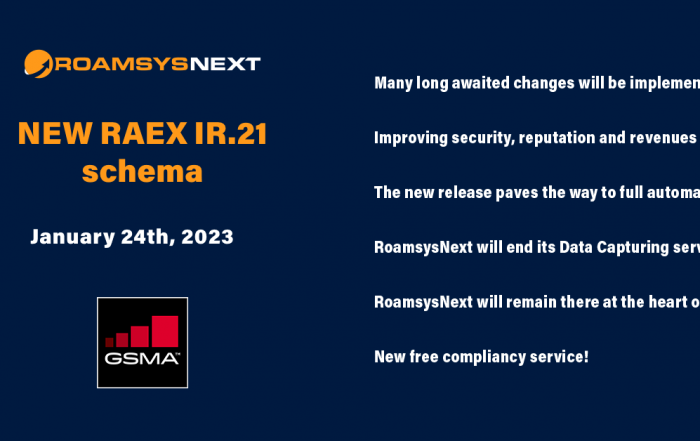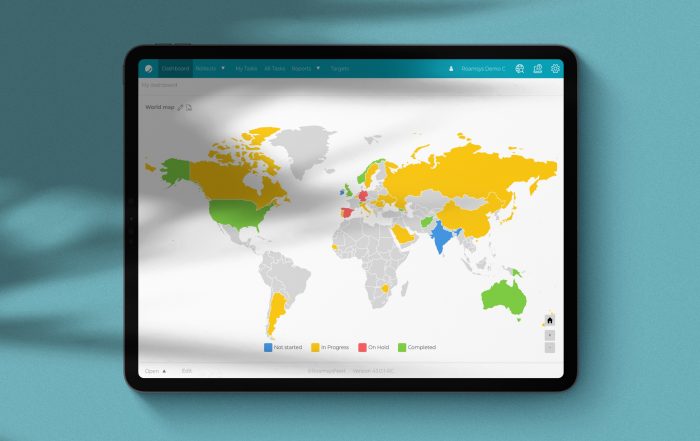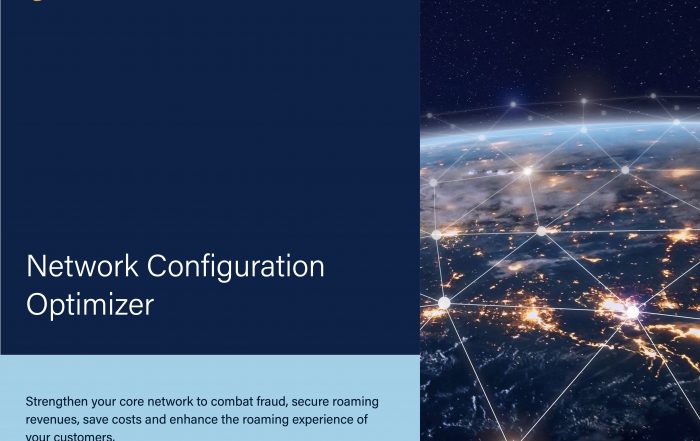
Gabriele Lieser
CUSTOMER SUCCESS MANAGER
Summary
SMS enjoys the reputation of being a safe channel for communication. But as any system, it is prone to abuse. The key weapon in the fight against Grey Routes is correct data. Knowing exactly which source numbers are associated with which countries, networks, hubs and businesses is essential so that operators will not have to pay dearly for ineffective SMS firewalls.
“Short Message Service.” Do you remember your first SMS? I bet you sent it with a thrill of anticipation to communicate with people in a short, quick and fun way. Originally created for phones using GSM (Global System for Mobile) communication, nowadays, all cell phone systems support it. Did you know, the first SMS message was sent in December 1992 from a personal computer to a mobile phone over the Vodafone GSM network. The text of the message: “Merry Christmas.” Sweet.

In RoamsysNext Insights our experts share their views on extensive industry topics and possible solutions we can offer.
Sending SMS from person to person became possible in 1993, and although subscribers used it reluctantly first, it soon became a growing market. Person-to-Person (P2P) SMS has declined somewhat since its peak due to Over-the-Top (OTT) messaging apps, such as WhatsApp, however, the volumes of SMS continue to remain high and growing due to Application-to-Person (A2P) messaging for all types of uses, from two factor authentication to delivery notifications. This has led to a multitude of attack vectors using SMS.
Grey Routes
SMS fraud profits from the fact that international text messages can be routed in several different ways to reach their destination so that each route is charged differently. The term Grey Route defines a route that is not authorized by the mobile operator for delivery of SMS to their subscribers. Usually, these methods cannot be charged for and may circumvent lawful interception requirements in the local country – let alone allow the operator to scan the message for spam or fraudulent attacks on their subscribers.
Grey Routes are prevalent where the mobile operator has an imbalance between international termination and local termination rates for SMS, coupled with an ineffective SMS firewall. A key weapon in the fight against Grey Routes is correct data regarding sources of messaging to ensure the SMS firewall and other nodes are applying the correct policies and the real source can be traced.

Subscriber Targeting
“Spam” is the unsolicited messaging of a subscriber that can be anything from a mild irritant to a dangerous privacy attack through “smishing” (SMS Phishing). Apart from the cost of handling complaints from subscribers, this can cause a large amount of churn as they move operator to attempt to escape the deluge.
A key weapon in this fight is correct data
Spam advertisements usually include a call-to-action, such as a phone number or web address to click on. Driven by click-through rates, the spammers engage in a multitude of techniques to bypass an operator’s systems to reach the subscribers for as low a cost as possible.
The use of SMS as a two factor authentication medium is commonplace as all handsets globally support this method, thus providing a cheap and universal method to secure accounts. Unfortunately, the attackers may masquerade as the business (bank, social media, etc.) or government agency and attempt to retrieve subscriber private information to defraud them.

There is a silver bullet to success
Controlling the SMS messaging arriving into an operator’s network from international, national and business (e.g. local bank) links is essential to preventing the above attacks. Knowing exactly which source numbers are associated with which countries, networks, hubs and businesses is essential.
As we have observed, the list of incidents is long, and as usual, it exposes the crucial factor of time and reliable data. SMS still has the reputation of being a safe channel for communication. But as any system, it is prone to abuse. Verifying numbers has never been more important, both for subscribers and MNOs. Screening the origin of incoming messages is the only safe way to prevent fraudulent attacks and to prevent revenue loss. Verifying that the message is of trustworthy origin and, if necessary, blocking suspicious SMS is the silver bullet of handling security breaches.
Verifying numbers has never been more important
What can we do for you? Already today, our tools simplify to an extraordinary extend the initial and ongoing correct configuration of every roaming relevant network element. This helps MNOs to block any unwanted or unauthorized traffic with very little effort. It certainly is an easy-to-use application to increase efficiency, transparency, and enhance resource management, and we continuously optimize our applications to serve our customers even better. Likewise, we are increasingly keeping an eye on upgrading security aspects. That’s how MNOs can leave analysts/ investigators with the most relevant cases to review. Since we are experienced in developing the InfoCentre RAEX Tools application on behalf of the GSMA, our tools are fully compliant and can be most easily implemented and aligned to your specific requirements. Talk to us, we will listen to you.
Gabriele Lieser joined RoamsysNext in 2020 as Customer Success Manager to strengthen the bonds with our increasing number of customers and to support the marketing team. Gabriele has a strong background in corporate sales. She studied at the Universities of Trier (Germany) and Manitoba (Canada) and is incorporated in the RoamsysNext Client Service team.
“The team is a crucial asset”
It has been an exciting year for RoamsysNext. And as 2023 is coming to an end, we took the opportunity to talk with CEO Michael Grasmück about the past year, the growing team that becomes more and more international, and the comeback of an industry institution.
15 years of RoamsysNext – Driving Global Connectivity
RoamsysNext turns 15, so we talked with CEO Michael Grasmück about the anniversary, the early years, the move to Luxembourg and the future within the fast-developing roaming industry.
The new age of the IR.21 – Be ready for the full automation!
The new RAEX IR.21 schema will be released early 2023 with great changes coming that allow us to revolutionize the way we work with the IR.21 data.
Reporting at a glance: The RoamsysNext Dashboards
The RoamsysNext tools offer many reporting functionalities of which the dasboards play an important role. Learn more about using them in practice to identify bottlenecks, visualize your team's performance and bring a smile to your management's faces.
End-2-End-Automation with Network Configuration Optimizer
The RoamsysNext Network Configuration Optimizer is the perfect solution to make the shift from manual processing to more and more automated processing, with the option to move to full automation. Let's see how it works.
From Roamsys to RoamsysNext
Sixteen months ago, Roamsys relaunched and became RoamsysNext. Time to look back to a year we never expected to happen.
How to Stay Secure
What can MNOs do to stand up to the ever-growing tide of telecom fraud and protect their assets? Stay alert, use great tools, collaborate with other market players, and take the fight to the fraudsters.
Telecom Fraud Hurts
Telecom fraud is a rapidly growing area that has serious effects on national critical infrastructure (civil, healthcare, energy, agriculture...) and wider industrial processes.
The GSMA MISP – How Does it Help?
Malware information sharing and threat intelligence sharing has unbeatable benefits that make any caveats and challenges look small in comparison.
The Experts behind RoamsysNext Insights
RoamsysNext Insights has a growing fan base due to its substantial reports. With a wide variety of great information and exciting insights, they inspire beginners as well as professionals.
How to Treat 2G and 3G Closures without Becoming an Archivist?
As we are entering the era of 5G, legacy networks are in a state of flux and lose significance. This blog is about how the sunsetting of 2G and 3G networks will impact mobile communication.
How to Choose a Signaling Firewall Wisely
In times of global turbulences and increasing fraud attacks the decision for a sophisticated signaling firewall becomes more and more a priority. Some general considerations help to narrow down the choice.
Identity Fraud in Telecom
Identity fraud robs people of their virtual existence; it costs time, money and nerves. But there are countermeasures that help.
How to Tackle the Challenges in Combating Telecom Fraud
Telecom fraud can have dire effects on critical infrastructure and always causes painful loss of revenue. See how the industry's joint efforts tackle the challenges in combating telecom fraud.
Face the Breach: Rehearse an Emergency Before it Happens
In case of a breach, most companies are poorly prepared to take quick action. Have a look at some ideas on how to make the best of a difficult situation and save valuable time.
Working from Home during a Global Pandemic
Due to the broad introduction of remote working, businesses need to rethink their current cyber security measures and consider how they need to be adapted or further developed.
The Future of Roaming Trainings – An interview with Milja Hofman, CEO Roamingwise
Roamingwise is a well-known provider of roaming trainings, seminars and consultancy in a variety of international roaming topics. In our interview, CEO Milja Hofman reveals how she prepares professionals to drive the roaming world.
Historical Fraud Incidents and Lessons to be learned
In the course of history, no era is free from the practice of deception for personal benefit. Let’s have a look at what we can learn from historic fraud cases from ancient Greece to modern times.
Two-Factor Authentication rules!
For some time now, we have introduced 2FA and have contributed our share to provide more secure access to our tools. Norbert Becker, Head of Software Development, picks up the thread and provides engaging insights into his area of responsibility.
Introducing: The RoamsysNext Network Configuration Optimizer
Learn how the RoamsysNext Network Configuration Optimizer enables MNOs to switch safely to full automation and growing roaming revenues by providing effective and secure data management of all roaming related business information.
Introducing: The RoamsysNext Wholesale Roaming Manager
The RoamsysNext Wholesale Roaming Manager provides powerful collaboration and reporting tools for all roaming partner relationships by converging everything from service openings to the user’s roaming footprint, test SIM cards and tariffs, document and contact management.
Don’t fear the breach – three more ways to avoid configuration errors
Three ways to bliss: take bold measures to automate processes as much as you can, check your firewall’s security logs regularly and enforce centralized authentication mechanisms.
We’re in this together
In the second part of our interview with Alexandre De Oliveira, POST Luxembourg Cyberforce, he highlights major pain points in fraud detection and stresses the importance of global information sharing via the GSMA T-ISAC initiative.
Mastering today’s Fraud Landscape
Learn how Alexandre De Oliveira’s team at POST Luxembourg Cyberforce is mastering today’s fraud landscape with penetration tests, security assessments, the Telecom Intrusion Detection System (TIDS) and the Telecom Security Scanner (TSS).
How to avoid configuration errors
Hardening the network is a good way to get configuration errors under control. Introducing smart firewall rules and consistently updating these rules can be very time-consuming, but it’s a crucial measure to be taken.
From customer request to feature
In our newest “RoamsysNext Insights”, David Houstek and Adrian von Wendt elaborate on our customer focused production processes.
Making a Stand against Fraud
In an insightful interview, our CTO, Hendrik Hoehndorf, speaks about further GSMA initiatives on fraud detection and prevention such as the MISP (Malware Information Sharing Platform) and T-ISAC (Telecommunication Information Sharing and Analysis Centre).
Cyber security and fraud prevention – the GSMA approach
How does the GSMA approach cyber security, fraud detection and prevention? Look at the incredible useful tools and informations they provide with the Fraud and Security Group (FASG) and documents on best practice countermeasures.
How insecure GTP makes LTE and 5G networks vulnerable
GTP will still have an impact on 5G. Our tools can help to identify dubious requests faster, reduce reaction times and block incidents in a fraction of time.
How bad can it get? Signaling attacks strike the heart of each MNO
This blog is about how correct data is key to ensuring that mobile communication is of trustworthy origin, especially in case of signaling attacks. Notably, the roaming industry has to take action for data verification.
Grey Routes, Spam, Smish – funny words but nothing funny about SMS Fraud
SMS enjoys the reputation of being a safe channel for communication. But as any system, it is prone to abuse. We show you what needs to be done.
4 more Types of Telecom Voice Fraud MNOs are vulnerable to
Voice fraud is known as one of the top inter-carrier fraud cases, and in order to expose them, time and reliable data is crucial. This article shows that prevention is key to make sure that legitimate traffic is not obstructed.
Three Types of Telecom Voice Fraud that can destroy businesses
This issue shines a light on the variety of security breaches and fraud incidents: A cabinet of horrors.
Problems with telecom fraud? How big the issue really is. And how we can help
Fraud and security issues cause considerable problems within mobile network operators. But we are here to help.
Let’s talk about data quality
Most fraud and security issues are caused by misconfigured network nodes. This article shows, how RoamsysNext treats this problem on their quest for data quality.





























